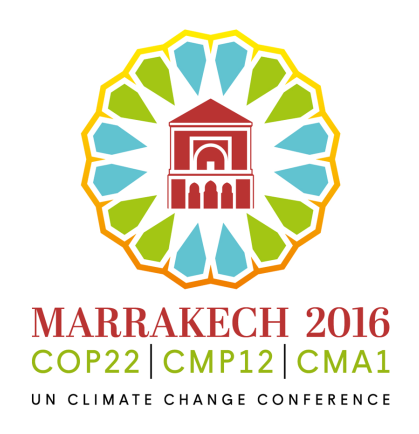Agriculture takes center stage as COP22 begins in Morocco
Partager la page
COP21, the global climate conference in Paris last year, resulted in an agreement on cutting atmospheric carbon. Now, COP22, which starts today in Marrakech, Morocco, will focus on how the world will adapt to climate change and mitigate its effects, especially in developing countries. The meeting is expected to have a greater focus on agriculture, and specifically on Africa. By Judith Schwartz.

In Paris, agricultural solutions - notably soil’s role as a carbon sink - entered global climate discussions. The chief vehicle was the French-led 4-per-1,000 Initiative, a pledge to increase carbon stocks in agricultural soils by 0.4 percent a year, a rate that proponents said would stem the rise of atmospheric carbon. The objective, says the French Ministry of Agriculture, "is to show that agriculture is part of the solution. It aims to increase organic carbon storage in soils, with a goal of improving food security and mitigating and adapting to climate change."
Four-per-1,000 has more than 170 signatories, including 32 countries. The U.S. has not publicly supported it, instead aligning with the Global Alliance for Climate-Smart Agriculture, which is more oriented toward industry and includes biotechnology as one approach.
Agriculture at the heart of climate talks
A new initiative, Adaption of African Agriculture (AAA), would place agriculture at the heart of climate talks. At a September meeting, a coalition of 27 African nations adopted the "Marrakesh Declaration", which calls attention to the continent’s vulnerability to climate irregularities - such as the drought that has left 30 million southern Africans food insecure - and the risks borne by smallholder farmers.
Since the Paris Agreement last year, countries have submitted their Intended Nationally Determined Commitments - essentially their plans for how to lower greenhouse-gas emissions in accordance with global targets. In analyzing the plans, the AAA organizers learned that African countries were committed to climate programs related to adaptation, agriculture and food security.
Funding, though, is crucial. A 2011 African Development Bank study estimates that adaptation to climate change will cost the region $20-$30 billion per year—a level of financing that is not available. The Paris Agreement stipulated equivalent allocation of funding for mitigation (minimizing temperature rise) and adaptation (contending with climate impacts that have occurred or are in the pipeline). However, Joe Thwaites, of the World Resources Institute, points out that only a small percentage has been earmarked for adaptation.
AAA and the 4-per-1,000 initiative are complementary
Rattan Lal, director of Ohio State University’s Carbon Management and Sequestration Center, says he has noticed greater interest among policymakers in agricultural and soil-related solutions to climate change. He says AAA and the 4-per-1,000 initiative are complementary. "We cannot adapt agriculture in Africa without restoring African soils and improving their health through carbon sequestration", he said.
During this year’s conference, Lal will speak at several side events, urging the adoption of sustainable methods on existing farmland to increase yields dramatically. "There is pressure to use more land [for agriculture]", he says. "That’s the easy way out. We should resist it. The strategy is to protect carbon stocks in forests, savanna and prairies… We can produce more with less land, water, nutrients and energy by reducing losses and improving efficiency."
The role agriculture will play in climate action remains to be seen. Participants of AAA expect the Africa program will have a "very large footprint" at COP22. Mohamed Ait-Kadi, president of Morocco’s General Council of Agricultural Development, says AAA and 4-per-1,000 "are mutually symbiotic and reinforcing one another."
Edward Davey, senior program manager at Prince Charles Charities’ International Sustainability Unit, says, "If 4-per-1,000 can catalyze good projects on the ground, then it will serve a good purpose". Linking soil-building efforts and financing is among 4-per-1,000’s objectives, says a representative of the French Agricultural Ministry, adding, "We also want to develop a tool that can help financial institutions evaluating their portfolio for ‘soil-friendly’ projects. The objective is to foster funding for projects in agriculture that are relevant in terms of soil fertility, resilience and carbon sequestration".
Advocates of agricultural solutions express hope for breakthroughs in Marrakech. "This COP is likely to birth instruments to make 4-per-1,000 and food security in Africa attainable dreams", says Zimbabwe’s Precious Phiri, the Africa coordinator for Regeneration International. "It has been termed a ‘COP of Action,’ a ‘COP of Africa,’ and rightfully so".
Judith Schwartz is a Vermont-based journalist and the author, most recently, of "Water In Plain Sight: Hope for a Thirsty World".